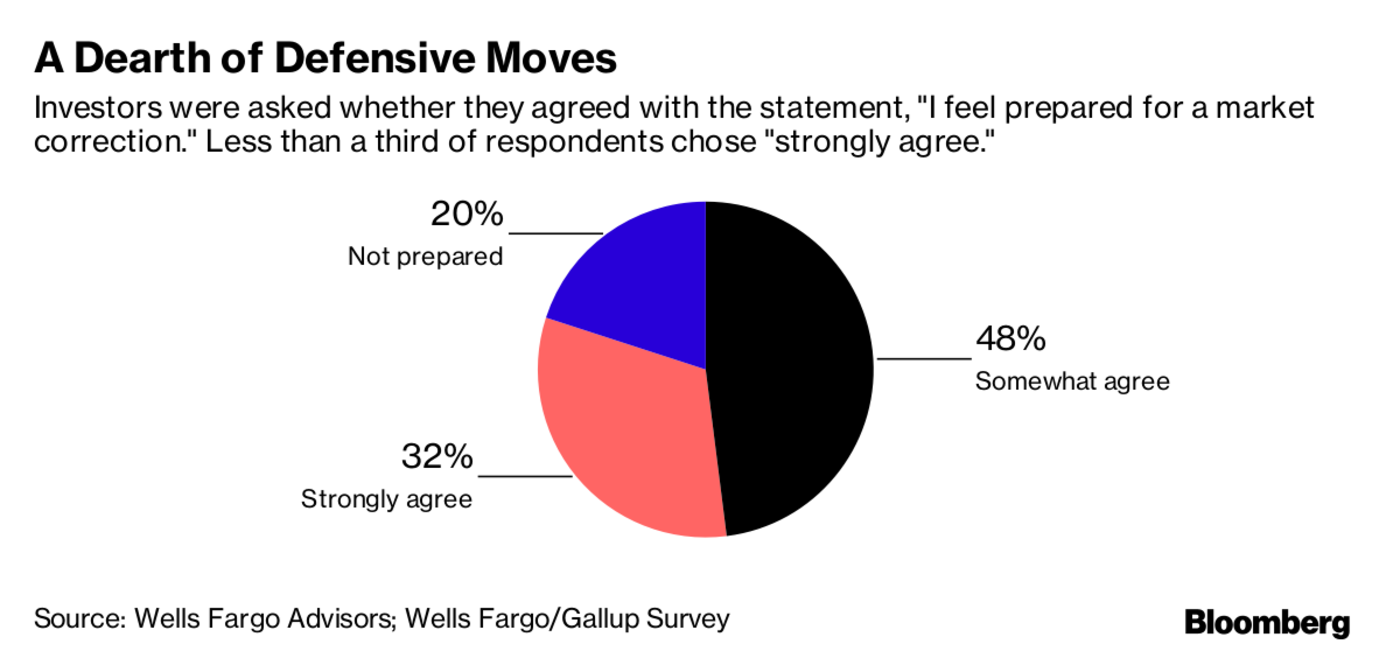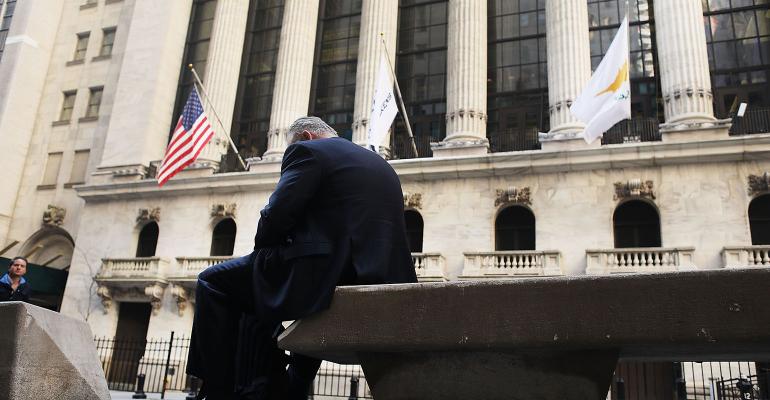(Bloomberg) --Investors expect the stock market to plunge. Their response: Whatever.
A little more than half of U.S. investors anticipate a decline this year that will wipe out “significant gains,” according to the latest Wells Fargo/Gallup poll results. That’s fully 54 percent of the respondents, though down from previous survey highs in 2013 (62 percent) and 2014 (58 percent).
Yet just 18 percent said they’re selling stocks to shield their portfolios from a downdraft, and only one out of five said they were buying bonds to limit their exposure to stock market risk. Forty percent said they weren’t rebalancing their portfolio, and 48 percent said they weren’t currently working with a financial adviser.

The telephone poll was of 1,006 investors in households with $10,000 or more in stocks, bonds, or mutual funds in an investment account, self-directed IRA, or 401(k) retirement account.
Investors may grow complacent after long stretches with the S&P 500 in the green, the survey notes. The market—which by the traditional count continues its course as a bull until it declines by 20 percent, when it becomes a bear—is now eight and a half years old. That makes it the second-longest bull market since World War II. Some say such an old bull is due for a breakdown.
Not everyone agrees with that measure, though. Bloomberg View columnist Barry Ritholtz thinks the starting date of a new bull should be when the market pushes beyond its prior bull market highs. That would be March 2013, making this bull just four and a half years old.
We may also be fearful, stubbornly hanging on to stocks in hopes that continued gains will help us fully recover the financial ground lost in the recession. The percentage of investors who say they haven’t yet bounced back financially, at 26 percent, is down from 37 percent in February 2016 but is still more than a quarter of respondents. Forty-three percent of investors said they can point to people they know who haven’t recovered from the economic downturn.
Or maybe we’re just keeping our heads and taking the long view.
Not only are the investors in the survey not terribly worried about a correction, 61 percent said now is a good time to invest in the stock market. In the face of a market correction, 62 percent of investors said they would ride it out, and 27 percent said it would be a buying opportunity. Just 15 percent agreed that “fear of a market correction is making your life stressful” and only 13 percent said a correction would hurt their financial picture “a lot.” Meanwhile, 43 percent anticipated a “moderate” amount of pain.
One contributor to this confidence may be that more people have money in target-date funds today, many in workplace 401(k) retirement savings plans. That could mean they feel they already have a reasonably diverse portfolio, since TDFs split money between different asset classes according to the age at which one wants to retire. Generally, the funds shift into less risky assets as an investor grows closer to retirement age, although some maintain healthy slugs of equities close to retirement age, since people are living longer and retirement may last three decades or so.
While TDFs are common in retirement plans, only about a quarter of the money that participants have in defined-contribution plans like 401(k)s is in TDFs, a Gallup spokesperson noted in an emailed comment. Many people split their money between a number of investment options in their plan and so will still need to rebalance their portfolio to suit their tolerance for risk, which is based on years to retirement and other financial circumstances, as well as temperament.
Unfortunately, investors in general tend to overestimate their risk tolerance, and the respondents to the Wells Fargo/Gallup survey may be doing just that. Sixty-three percent said they can “tolerate market downturns very or somewhat well.”
And the 35 percent who said they had “little or no tolerance for significant downturns”? Chickens.
Or realists.
Have personal finance questions or lessons to share? Join Money Talks, the new Facebook community from Bloomberg News.
To contact the author of this story: Suzanne Woolley in New York at [email protected] To contact the editor responsible for this story: Peter Jeffrey at [email protected]

